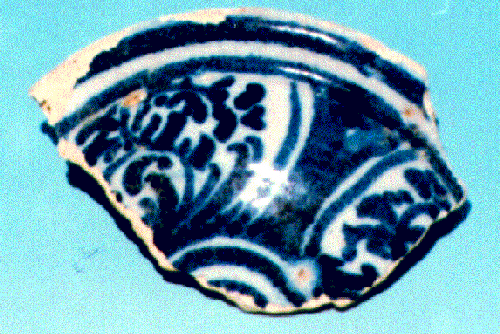|
| Fragment of a Cover of a Small Vase in Faience, from the Convent of Jesus, Setúbal: 16th century |

The colourful glazed and decorated earthenware called Faience is named after Faenza in Italy, but it had been made since Medieval times in Spain as a result of Islamic influence.
The blue-and-white decorated Faience used by the nuns of the Convent of Jesus in the 16th century probably came from Faenze itself. These colours became the most popular ones in post-Medieval times because of the popularity of blue-and-white Chinese porcelain, which was imitated throughout Europe in earthenware in the 17th century.
© 1998 Oxfordshire Museum Service, Setúbal Museums and the Benaki Museum